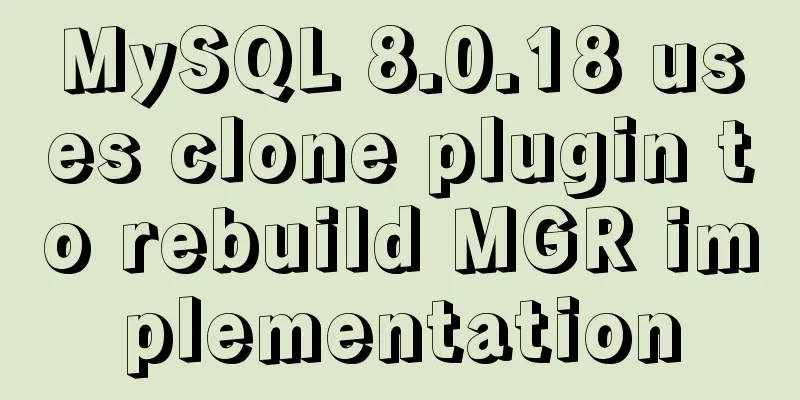What are the ways to import CSS? What is the difference between link and @import? How to choose

|
I saw that Taobao’s webpage uses import, while many websites use link. Of course, there are also some websites with simpler pages and large traffic that directly write CSS in the HTML code? What is the difference between them? Is it better to use import or link for CSS? I got a general idea from the Classic Forum and another website. Most of the Taobao pages are written like this : Copy code The code is as follows:<style type="text/css" media="screen"> @import url("http://www.taobao.com/home/css/global/v2.0.css?t=20070518.css"); </style> Many websites use link : Copy code The code is as follows:<link rel="stylesheet" rev="stylesheet" href="default.css" type="text/css" media="all" /> Websites like Google, Baidu, 163, etc. are all written directly on the web pages. Of course, the advantage of using links and imports is that they are easy to maintain, but when the network speed is slow, loading interruptions will occur, resulting in page layout errors. They have the same function, the only difference is that they serve different objects @import for CSS link serves the current page. Some netizens in Blue Classic said that @import will be executed first. +++++++++++++++++++++++++++++++++++++++++++++++++ The difference between link and @import in external referenced CSS <br />I have just finished writing several ways to load CSS in XHTML these two days, among which external referenced CSS is divided into two ways: link and @import. Essentially, both methods are for loading CSS files, but there are subtle differences. Difference 1: Differences among ancestors link is an XHTML tag, while @import is completely a method provided by CSS. In addition to loading CSS, the link tag can also do many other things, such as defining RSS, defining rel connection attributes, etc., while @import can only load CSS. Difference 2: Difference in loading order <br />When a page is loaded (that is, when it is browsed by the viewer), the CSS referenced by the link will be loaded at the same time, while the CSS referenced by @import will not be loaded until the entire page is downloaded. So sometimes when you browse a page that uses @import to load CSS, there will be no style at first (it will flicker), which is quite obvious when the network speed is slow. Difference 3: Difference in compatibility <br />Since @import was proposed in CSS2.1, it is not supported by older browsers. @import can only be recognized by IE5 and above, while the link tag does not have this problem. Difference 4: Difference when using DOM to control style <br />When using JavaScript to control DOM to change the style, you can only use the link tag because @import is not controllable by DOM. Difference 5: @import can be used to import other style sheets into CSS .<br />For example, you can create a main style sheet and import other style sheets into the main style sheet. These are basically the differences (if there are any other differences, please tell me and I will add them), the rest are the same. From the above analysis, it is better to use the link tag. |
<<: Docker generates images through containers and submits DockerCommit in detail
>>: Application nesting of HTML ul unordered tables
Recommend
Example of assigning values to ActiveX control properties by param name in a web page
Copy code The code is as follows: <HTML> &l...
MySQL REVOKE to delete user permissions
In MySQL, you can use the REVOKE statement to rem...
Detailed explanation of the solution to Tomcat's crash when double-clicking startup.bat
As a programmer who has just learned Tomcat, this...
Solve the problem of installing Tenda U12 wireless network card driver on Centos7
Solution process: Method 1: The default kernel ve...
IE8 Developer Tools Menu Explanation
<br />This article has briefly explained the...
Detailed explanation of the front-end method of passing parameters between HTML pages
A situation that often occurs in a project is tha...
Introduction to the difference between shortcut icon and icon code
Statement 1: <link rel="shortcut icon"...
Practical record of MySQL 5.6 master-slave error reporting
1. Problem symptoms Version: MySQL 5.6, using the...
Why can't the MP4 format video embedded in HTML be played?
The following code is in my test.html. The video c...
Explanation of the new feature of Hadoop 2.X, the recycle bin function
By turning on the Recycle Bin function, you can r...
MySQL common statements for viewing transactions and locks
Some common statements for viewing transactions a...
Create a virtual environment using venv in python3 in Ubuntu
1. Virtual environment follows the project, creat...
Use the sed command to modify the kv configuration file in Linux
sed is a character stream editor under Unix, that...
Detailed explanation of the implementation process of Nginx enabling Brotli compression algorithm
Preface In web applications, in order to save tra...
JavaScript drag time drag case detailed explanation
Table of contents DragEvent Interface DataTransfe...









